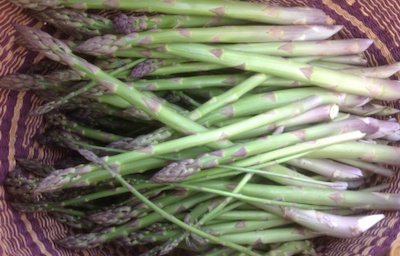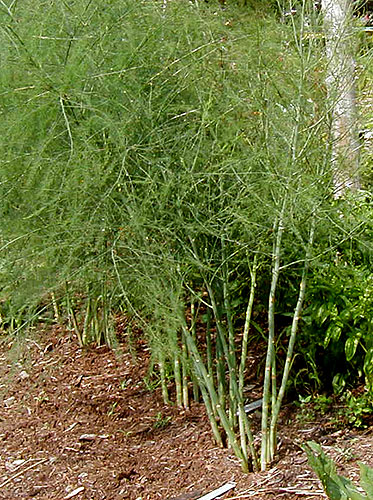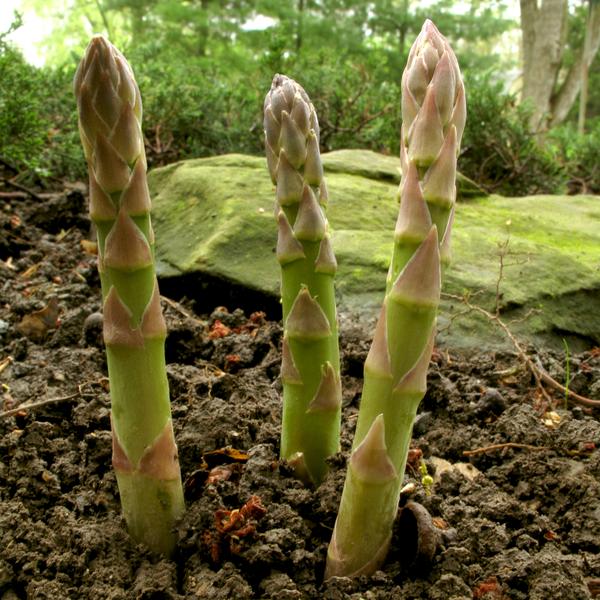The Age Of Asparagus
By Elaine Homstad, Fairfax Master Gardener
Q. What did one vegetarian hippie say to the other?
A. “This is the dawning of the Age of Asparagus!”
Asparagus, of course, is no joke. It is one of the most nutrient-rich and delicious vegetables available. Although in the past it could only be found fresh in stores and farmers markets in the spring, now you can buy it fresh in stores year-round. But have you ever tried growing your own? If you are a patient gardener who is willing to delay gratification for long-term results, you might like to try. If so, here are some “Asparagus Tips” for you.
 Asparagus, unlike many other vegetables, is a perennial, and, true to a perennial’s nature, is best after its second year. An asparagus bed can last from 12 to 15 years, so if you are planning one, make sure that it can remain undisturbed for a long time.
Asparagus, unlike many other vegetables, is a perennial, and, true to a perennial’s nature, is best after its second year. An asparagus bed can last from 12 to 15 years, so if you are planning one, make sure that it can remain undisturbed for a long time.
Asparagus needs a sunny location, with at least six hours of full sun per day. It prefers well-drained, deep and loose soil. Aim for a neutral soil pH (6.5 to 7.0) and ensure the soil’s ideal conditions with an enrichment of organic materials such as manure, compost, leaf mold, sand, peat moss or a combination of these. It is important that if your soil has a heavy clay composition, the soil should be made loose and friable, which may require double digging.

Asparagus plant

Asparagus sprouts
One plant will yield about 10 to 20 spears per season, but you will not realize that harvest until at least their third year. DO NOT harvest at all in the first year, and in the second year, harvest only lightly — about 50 percent of the spears for only three to four weeks. By the third year, your plants should be well established, and you can usually harvest daily for eight to ten weeks. Harvest when spears are no taller than 8 inches and snap them off just below the soil surface.
It is important to keep weeds from appearing in the bed, and hand-pulling is preferable to hoeing, to avoid disturbing the plants. Should asparagus beetles appear, they should be hand-picked, rather than sprayed. The bed should also be kept mulched with a seed-free straw, hay, grass clippings or shredded leaves rather than with a wood-based mulch.
References
Asparagus, Virginia Cooperative Extension Publication 426-401
Growing Guide – Asparagus, Cornell University
Asparagus, University of Maryland Extension Publication GE 100